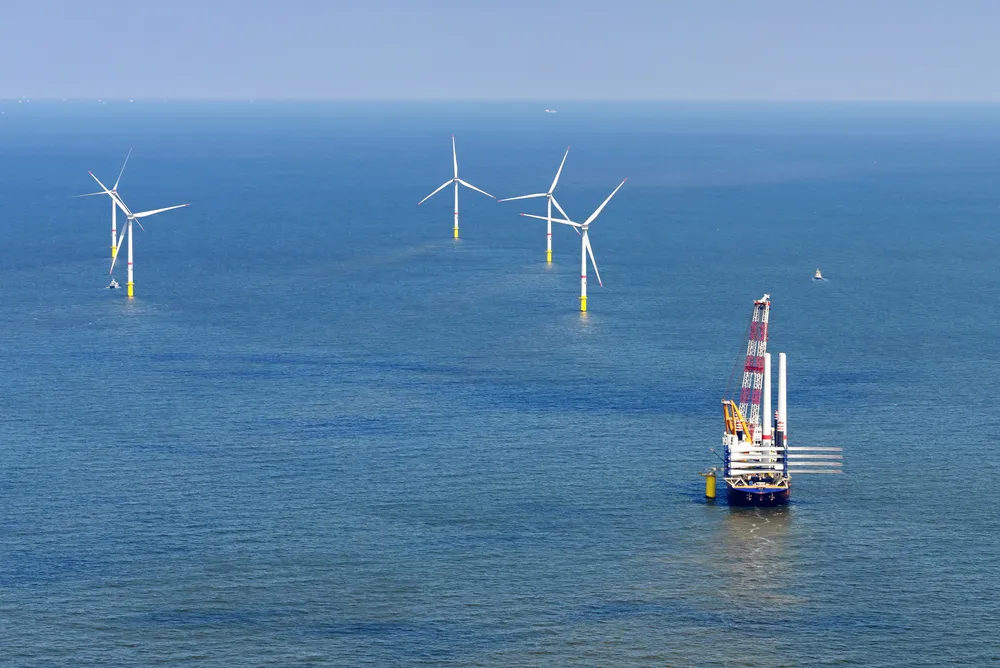Could Belgium's offshore wind dash be too fast for its own good?
ANALYSIS | Nation has kicked off tenders for next 3.5GW of North Sea wind attached to an artificial energy island but fears grow that tight construction timeline could deter developers

With a tiny coastline of a mere 67km, sandwiched between the French and Dutch parts of the North Sea, Belgium has been punching above its weight in offshore wind for some time, and its 2.3GW of operating capacity still outranks that of France with its far longer coasts.
The option means that operators or bidders can carve out half of their power production from the CfD mechanism through a PPA with a fixed price below the strike price plus €3/MWh. An additional 25% of electricity production can be carved out for PPAs with members of a so-called energy community, a type of citizen participation.
A fall-back option allows operators or bidders to bring carved-out volumes back under the CfD regime if a PPA defaults, expires, or is terminated – a flexibility that should be quite attractive to investors.
“That's just one of the reasons why Europe will follow the announcement of the first Princess Elisabeth Parcel winner in 2025 with interest,” Fremaux said.
The market is indeed looking closely at Belgium’s next offshore wind expansion.
Calculations for levelised cost of energy (LCOE), as well as the offered sites, look attractive, Marios Dimos Chatzisideris, senior market analyst at Aegir Insights, said at a recent webcast. The intelligence company has applied its financing modelling tool to the upcoming tenders and said the sites offered “are very competitive” compared to sites in other established offshore wind markets such as Germany, the Netherlands or Denmark.
The fact that there are no grid connection costs for developers as transmission system operator Elia is paying for both the energy island and the grid link to the mainland is positive, Aegir stressed.
“We think there will be very attractive projects there,” Chatzisideris said.
The upcoming Belgian tenders will also include non-price criteria. Developers need to open up at least 1% of the total investment cost to citizen participation. Applications are assessed on both price and non-price criteria and 10% of the total share of cost is opened up to the public.
To earn maximum points, bidders must make 4% open for citizens' participation, and the CfD support scheme will have a partial indexation.
But the vice president for offshore wind, portfolio development, at the German utility with vast experience in the construction of North Sea wind farms also pointed to a “quite ambitious timeline” for the new Belgian sites.
“We see this as an obstacle.”
Belgium has carried out excellent work in preparing the grid connection for the new sites, “but the timeline to secure projects until 2029-ish and still be able to get a turbine for that one is highly ambitious, and therefore we are a bit sceptical that the timeline can actually hold up”, Grubel said.
Successful bidders have only four years to build a wind farm at the site, from the award to the start of operations, with Aegir’s Chatzisideris also calling the construction timeline “a bit tight”. The impact of CfD compensation in times of grid curtailment isn’t 100% clear either, Aegir cautioned.
“We mostly want to have a continuous development of projects,” EnBW’s Grubel said. “Obviously you cannot avoid overlap [entirely]. We don't want to avoid overlap, but we try to fit in projects in this sort of chain of pearls.”
Global wind energy expert Shashi Barla said that building wind farms at the new sites within the four-year period given by the Belgian government “seems very unrealistic”.
“While the UK is a well-established market, the state is responsible for the grid connection in the Netherlands. So, in both cases, the developers can realise the projects within four to five years after they are awarded.
“However, for Belgium to replicate the same success is quite challenging, considering the market has been inactive for a while now.”
Barla said he would expect the full 3.5GW of capacity to be operational “by a 2031/32 time frame”.
(Copyright)